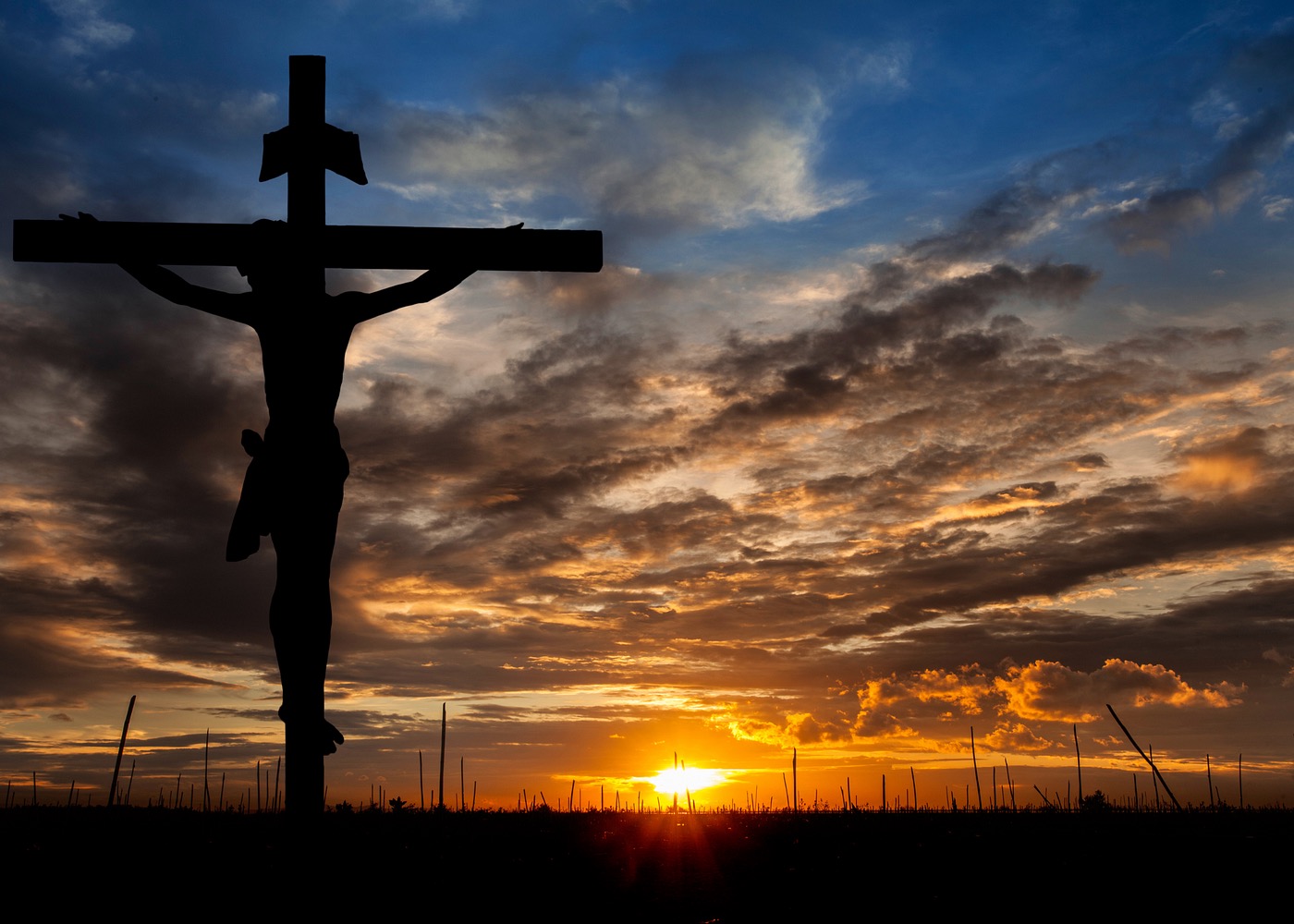✝️ Why Did Jesus Have to Die for Our Sins?
A Journey Through Scripture, Theology, and God’s Love
📖 Introduction: A Question That Still Matters
Why did Jesus have to die?
It’s a question that stirs hearts and stumps minds—from dusty church pews in rural America to the halls of great seminaries. It’s not just academic. It’s deeply personal. If Jesus really is the Son of God, why did He have to suffer so brutally?
Was it divine child abuse, as some critics claim? Or is it the deepest display of divine love this world has ever seen?
Let’s take a slow walk through Scripture and sit with the insights of great theologians—past and present—to understand this foundational truth of the Christian faith.
📜 The Biblical Foundation: The Problem of Sin and the Promise of Salvation
The Bible doesn’t leave us guessing.
“Without the shedding of blood there is no forgiveness of sins.”
—Hebrews 9:22 (ESV)
From Genesis to Revelation, we see a pattern: sin separates us from God, and blood atonement restores fellowship. The Old Testament is filled with sacrifices—not because God delights in blood, but because He’s showing the seriousness of sin and the cost of redemption.
Isaiah 53 paints a prophetic picture:
“He was pierced for our transgressions… and by His wounds we are healed.”
The New Testament affirms that this prophecy points directly to Jesus. As Paul wrote:
“God presented Christ as a sacrifice of atonement, through the shedding of his blood—to be received by faith.”
—Romans 3:25 (NIV)
Jesus didn’t die as a victim of circumstance. He willingly laid down His life (John 10:18) to fulfill God’s eternal plan of redemption.
🏛️ Historical Voices: What Theologians Have Said
Over the centuries, theologians have asked: What exactly did Jesus accomplish on the cross? And why did it have to be so costly?
Let’s break down the major views.
🧔 Athanasius (4th Century) – The Incarnate Rescuer
In On the Incarnation, Athanasius argues that because humanity was sinking into corruption, only God Himself could restore what was broken.
“He became what we are so that we might become what He is.”
—Athanasius
Key insight: Christ’s death wasn’t just a payment—it was a cosmic rescue mission. God defeated death by entering it Himself.
🧔 Anselm of Canterbury (11th Century) – Satisfaction for Divine Honor
In Cur Deus Homo (“Why the God-Man?”), Anselm argued that sin dishonors God. To restore the relationship, a payment had to be made.
But no mere human could pay the price.
“You have not yet considered the weight of sin.”
—Anselm
Key insight: Jesus, fully God and fully man, alone could offer the perfect satisfaction.
🧔 Martin Luther (16th Century) – Substitution at the Cross
Luther saw the cross as the great exchange: Jesus took our sin; we receive His righteousness.
“He became the most sinful man who ever lived—because our sins were laid on Him.”
—Luther
This is the foundation of Penal Substitution: Jesus took our punishment, satisfying God’s justice.
🧔 John Calvin (16th Century) – Justice and Mercy Embrace
Calvin continued Luther’s theme but emphasized the sovereignty of God. The cross was not a backup plan; it was the eternal plan of God.
“In the death of Christ, God demonstrated both the seriousness of sin and the riches of His grace.”
—Calvin
Key insight: God’s wrath against sin and His mercy toward sinners met at the cross.
🧠 Modern Thinkers Speak
🧔 Karl Barth – The Judge Judged in Our Place
Barth believed the cross is where God judged sin—and bore the judgment Himself.
“God’s No to sin and God’s Yes to the sinner are both revealed in the cross.”
This keeps us from seeing the cross as divine cruelty. It’s God Himself who suffers.
🧔 Jürgen Moltmann – The Crucified God
In The Crucified God, Moltmann emphasized that God enters into our suffering.
“Only a suffering God can help.”
—Moltmann
This is not a distant deity punishing someone else. It’s God absorbing the pain of humanity.
🧔 N.T. Wright – The Victory of the King
Wright critiques overly legalistic models. He sees the cross as part of the story of Israel, where Jesus fulfills God’s covenant promises and defeats the powers of evil.
“Jesus didn’t just die to forgive sins—He died to launch new creation.”
—Wright
🧩 Models of the Atonement: How Did It Work?
Theologians have developed several atonement models, each with different emphases:
| Model | Description | Key Thinkers |
|---|---|---|
| Penal Substitution | Jesus took our punishment | Luther, Calvin, John Stott |
| Satisfaction Theory | Jesus restored God’s honor | Anselm |
| Christus Victor | Jesus defeated sin, death, Satan | Athanasius, N.T. Wright, Gustaf Aulén |
| Moral Influence | Jesus showed love to inspire transformation | Abelard |
| Governmental | Jesus demonstrated God’s justice | Hugo Grotius |
These aren’t mutually exclusive. Like facets of a diamond, they each reveal something glorious.
🎨 Illustrations That Help
🔗 The Chain Breaker:
We were chained by sin—addiction, guilt, fear. Jesus broke those chains with His death and resurrection.
⚖️ The Courtroom Analogy:
You’re guilty. The judge pronounces the sentence—then steps down, takes off the robe, and pays your fine.
🌉 The Bridge Story:
Sin created a chasm between us and God. The cross is the bridge that makes the way home.
🛡️ The Battlefield:
Jesus stormed the gates of hell and won. His resurrection shouts, “Victory!”
📚 Scripture Speaks: Atonement in the Bible
- Romans 5:8 – “While we were still sinners, Christ died for us.”
- 1 Peter 3:18 – “Christ suffered once for sins, the righteous for the unrighteous, to bring you to God.”
- 1 Corinthians 15:3-4 – “Christ died for our sins according to the Scriptures… He was raised on the third day.”
The apostles didn’t speculate—they proclaimed.
❤️ Love at the Center
Sometimes theology can get technical. But at the heart of the cross is love.
“Greater love has no one than this: that he lay down his life for his friends.”
—John 15:13
“For God so loved the world that He gave His one and only Son…”
—John 3:16
This wasn’t a cosmic accident. It was the planned act of divine love—a rescue mission for the undeserving.
🔍 Why Did Jesus Have to Die?
✅ Because sin is serious.
Not a mistake. Not a misstep. Sin is rebellion against a holy God.
✅ Because only He could do it.
No one else was sinless. No one else was both God and man.
✅ Because love drove Him.
He didn’t just die for the world—He died for you.
“The Son of God loved me and gave Himself for me.”
—Galatians 2:20
🪧 Final Thoughts: More Than a Theology Lesson
Jesus didn’t go to the cross because He had to.
He went because He wanted to.
He wanted to save sinners. Restore relationships. Defeat death. Bring home the prodigal. Show the world what real love looks like.
The cross is not just a symbol—it’s a story. Your story.
And that’s why He had to die.
📌 References
- Anselm, Cur Deus Homo?
- Athanasius, On the Incarnation
- Luther, Lectures on Galatians
- John Calvin, Institutes of the Christian Religion
- Karl Barth, Church Dogmatics
- Jürgen Moltmann, The Crucified God
- N.T. Wright, The Day the Revolution Began
- John Stott, The Cross of Christ
- Wayne Grudem, Systematic Theology
🙏 Closing Encouragement
Friend, if you’ve ever wondered whether you’re loved, look no further than the cross.
He died for your sins.
He rose to give you life.
He’s calling you home.
📝 Published by Mountain Veteran Ministries
💬 Leave a comment below or share this blog if it stirred your heart.
📧 Subscribe to our newsletter for more gospel-rooted insights.

